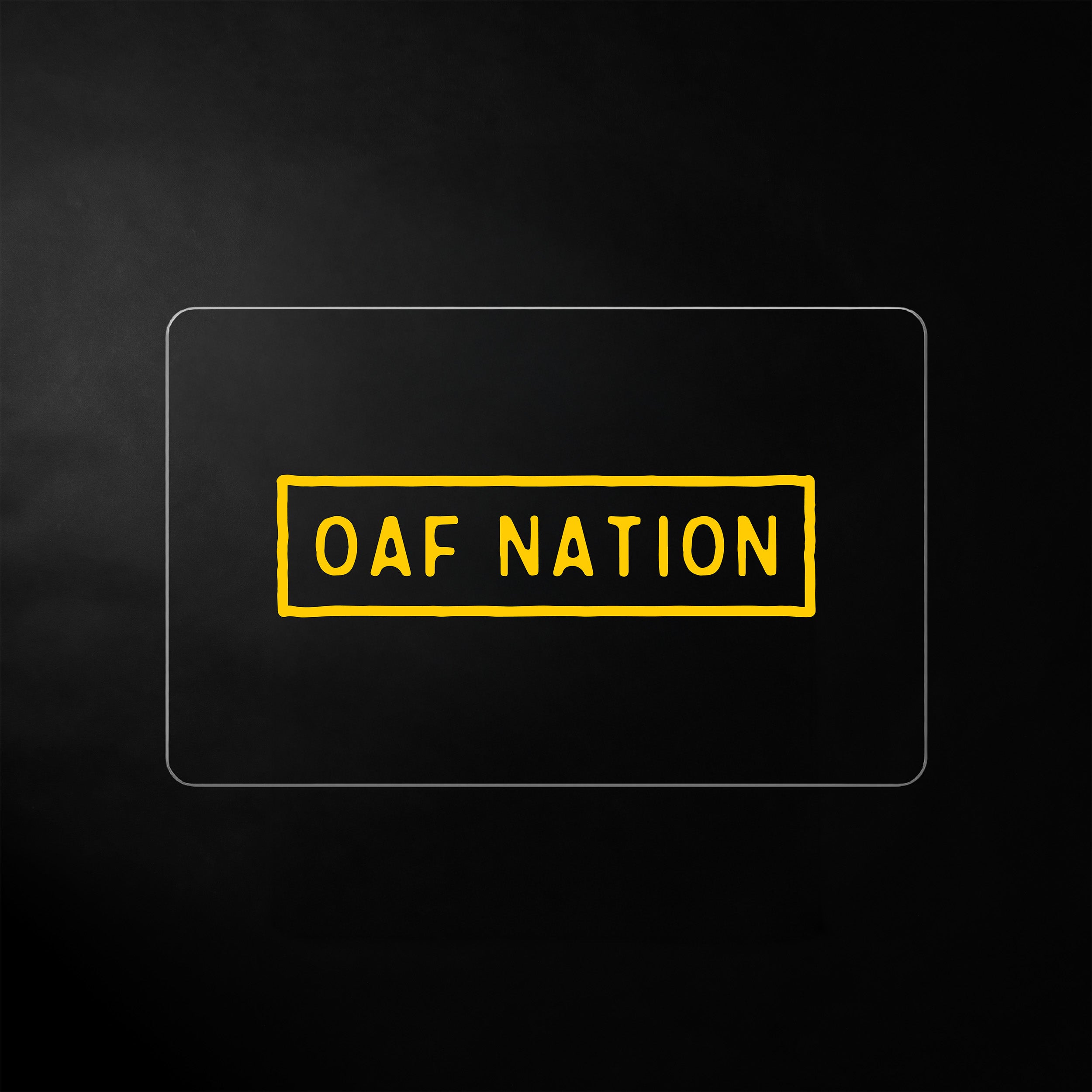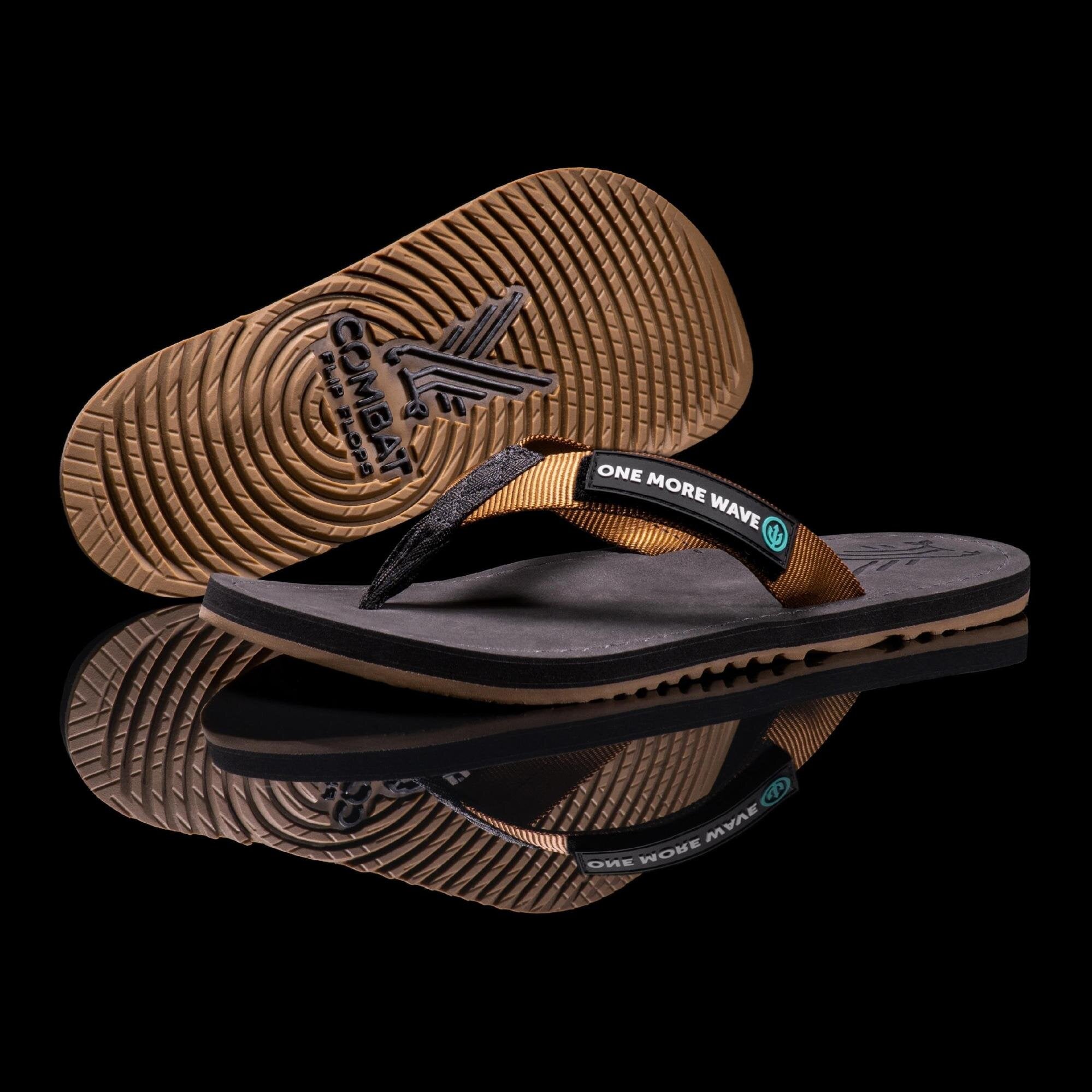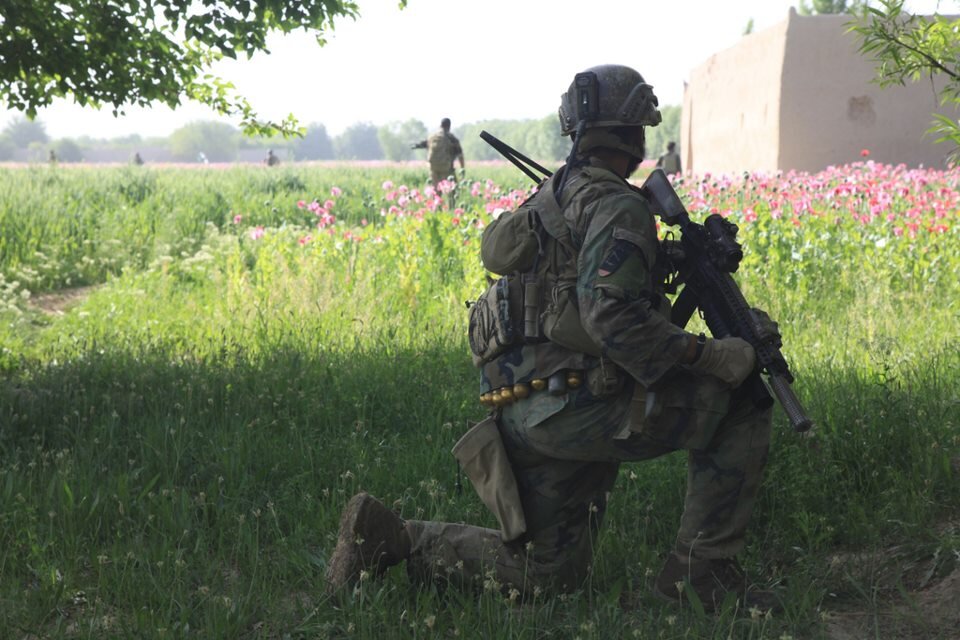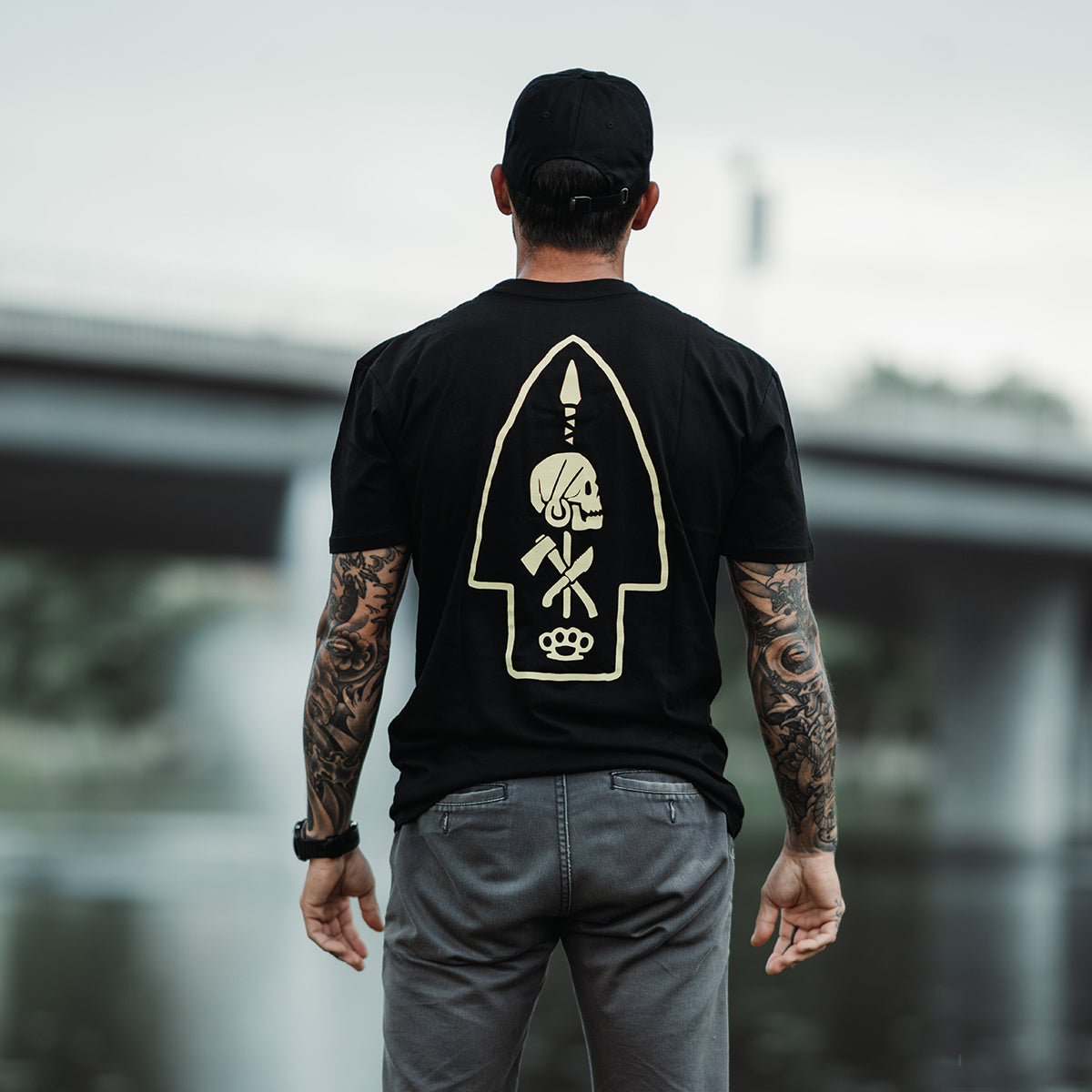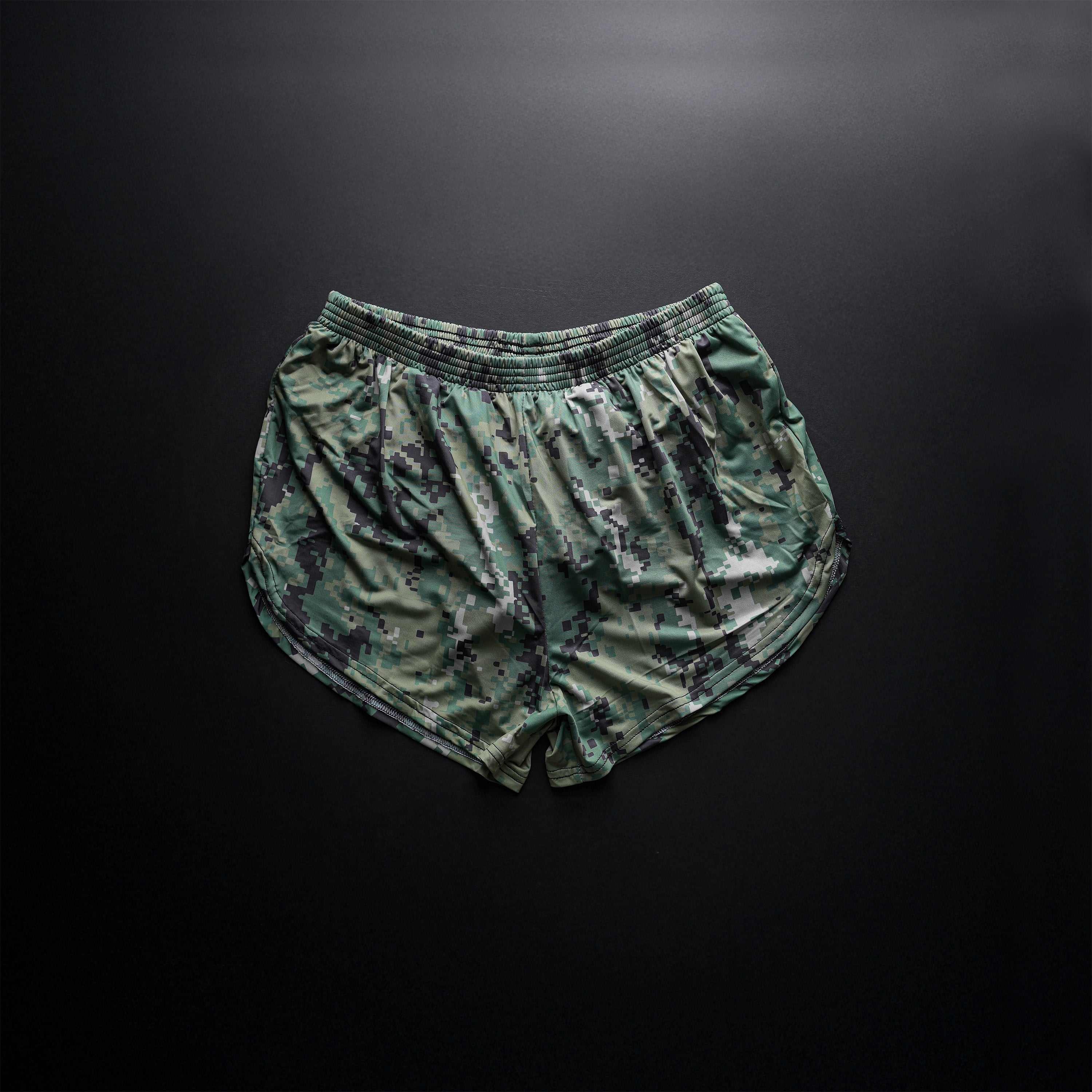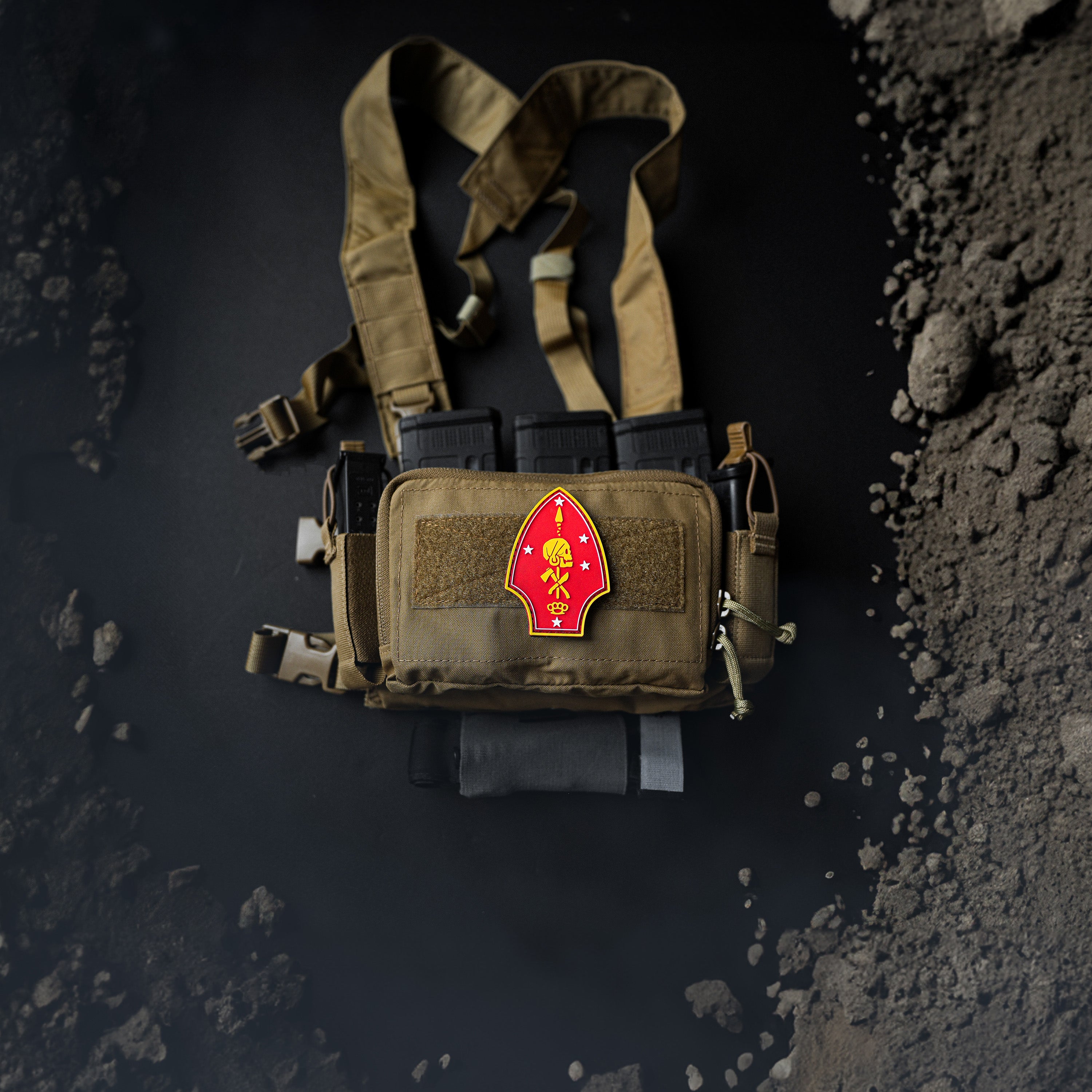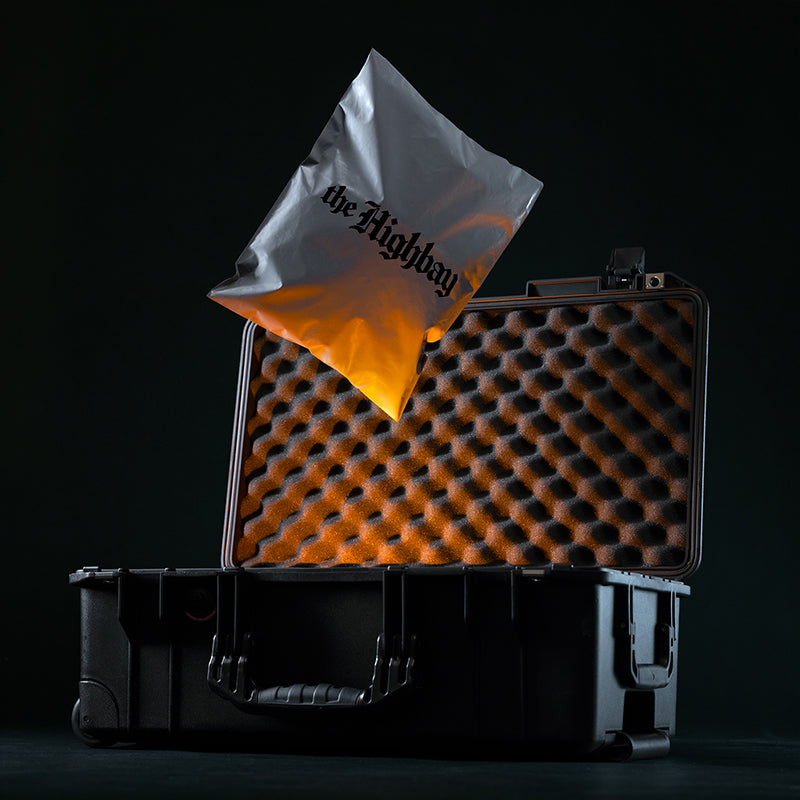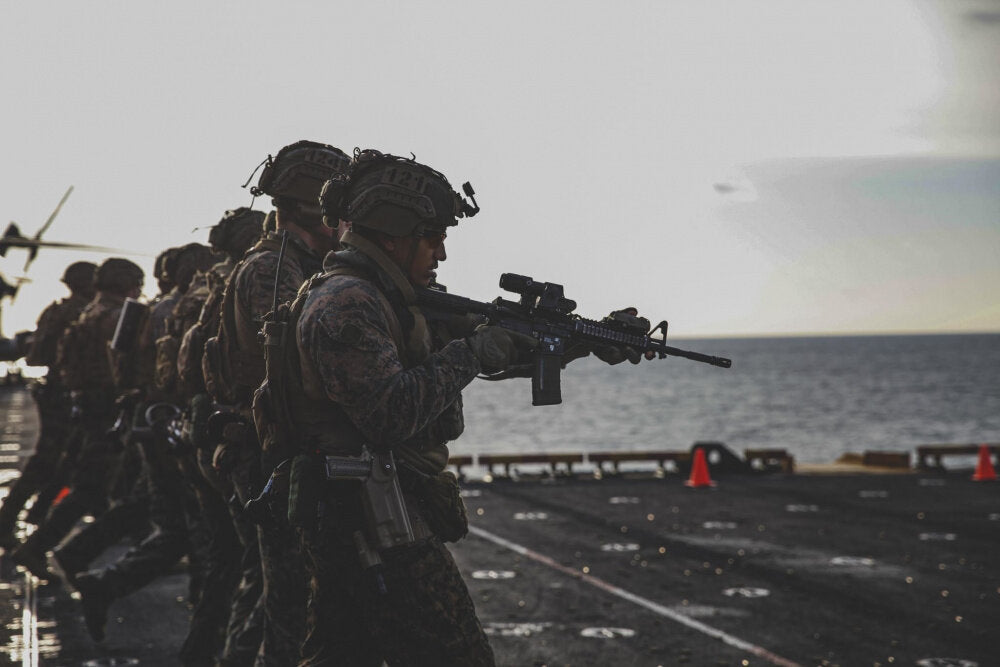
The Marine Corps’ Identity Crisis
Without an active conflict, The Marine Corps is facing an identity crisis; and its solution is to reinvent the wheel. While the argument stands that our future war will be with a peer threat in the South China Sea – and that we must prepare to operate in a coastal environment dispersed across hundreds of miles of sea and island chains – the Marine Corps is working too hard to change the way it does business. They’re throwing a fucking grenade at the infantry structure.
The Corps is at a crossroads. After spending two decades conducting wars in the desert and mountains, the Marine Corps realized it resembled a conventional land army. Screaming “Fuck that, I’m no soldier!” all the way to the shores of Tripoli, General David Berger, Commandant of the Marine Corps, called for a return to the Corps’ “naval roots,” preparing to duke it out in the first island chain. With the Marine Corps shifting focus back to amphibious operations, leaders think they need to change the entire structure.
The Marine Corps is looking to transform its infantry structure to conduct decentralized operations in a littoral theater. The new Marine Littoral Regiments will perform sea control and sea denial while focusing on offensive and defensive operations.
This, however, must be achieved with smaller infantry battalions. The Corps is cutting Weapons Company from the ranks. #goons_out
Instead, every infantry Marine will train on every weapon system, except for mortars, who will remain a separate section within Headquarters & Services Company. The Marine Corps has yet to decide if it will renumber the 0311 MOS to some all-encompassing infantry MOS.
The basic rifleman is the epitome of the infantry. Creating a new 03xx MOS will require increased training and increased maturity to have a working knowledge of all weapons available to them.
Leaders will soon plan for their mission and assign weapons to their Marines according to the mission set. Squads will check out the needed weapons from the armory – or “arms room” – for their specific mission task and purpose, potentially leaving critical assets behind. Small unit leaders will need to have a greater understanding of tactics to fulfill missions. Moreover, the Marine Corps believes they need a more mature force.
The solution is higher ranks at each billet.
A Master Sergeant will replace the hailed Company Gunny. Each platoon will be staffed with a Gunnery Sergeant. Squad leaders will be Staff Sergeants, and sergeants will lead fire teams. At first, Marines will fulfill the same billets for years on end. “Congratulations on your promotion to Staff Sergeant. You do not get any greater responsibility.”
But higher rank does not necessarily equate to greater maturity. More than likely, the Marine Corps will change the time required in order to get promoted to meet the demand and end up with the same age group filling billets. Instead of 19 year old Corporals leading fire teams, we’ll see 19 year old Sergeants. Extra Sergeants don’t appear out of thin air. They need to be promoted from within or taken from adjacent units in the division.
According to the planners of this new infantry design, this hierarchy will lead to a more mature and experienced force, capable of making decisions in a complex operating environment. The Marine Corps is looking to have higher grades at each billet and a robust arsenal of weaponry for each Marine.
Sounds a lot like the Ranger Battalions.
Why not create a tiered infantry? Suppose the Marine Corps wants to mirror the Ranger Battalions. In that case, they need to reflect their training pipeline by taking Grunts from within the traditional units and molding them into more skilled warfighters. This next echelon of infantry should require a screener to join and rigorous training to become part of that unit; thus, producing highly-skilled, seasoned infantrymen who can be trained and equipped to support a multitude of operations.
#MarineFuckingRecon
Why not adapt Recon to be the tiered infantry? The “answer” to that proposition is that there is only one Recon battalion per division (1st Recon in California, 2d Recon in North Carolina, and 3rd Recon in Okinawa), and that will not get the job done.
Meanwhile, the 75th Ranger Regiment only has three battalions and an additional Special Troops Battalion, for a grand total of roughly 3,600 personnel. The tiered infantry that is the 75th Ranger Regiment breeds competition. Soldiers want to be part of the 75th. They want to be part of the elite. They compete and are selected to be part of the next tier in the infantry. Similarly, Marines want to be part of the elite by going to the Basic Reconnaissance Course (BRC) or MARSOC Assessment & Selection. They want to be part of the next echelon of fighting. However, unlike going to the Ranger Battalions, Marines who switch to Recon or MARSOC no longer fall under an infantry-like structure. MARSOC falls under USSOCOM, while Recon engages in platoon-level operations. As it stands, the Marine Corps currently lacks an elite infantry force, but it doesn’t need to reinvent the wheel to create it.
So back to the question: why not adapt Recon to be the next tier in the infantry? There are three Recon battalions. If there is a desire for a larger force, it would surely be easier to create one more battalion per division than change the structure of every infantry battalion in the Marine Corps. Experiments are currently taking place with one battalion in 1st, 2nd, and 3rd Marine Division, and by 2026, they will mold 21 infantry battalions into the new design. A Marine Officer who worked on the planning committee of this new infantry structure explained that the Marine Recon discussion is a separate issue. They will soon be used to support MARSOC to conduct reconnaissance operations. I’ll leave that there…
With Recon off the table as the advanced infantry force, the Marine Corps is rolling full steam ahead with their new force design. The end goal, as previously mentioned, is decentralized operations. A smaller, more mature infantry that can execute commanders’ intent with their organic weapons. Yet, one issue remains; the Marine Corps hates decentralization.
Command and Control is the norm. Commanders dictate maneuver on the ground and rely on feedback from subordinate units. That feedback requires constant communication from the subordinate leaders through tactical handheld radios, and the use of Blue Force Trackers (BFTs), which allow commanders to see where friendly and enemy troops are on the ground [No, not like the map on Call of Duty]. It depicts unit symbols. The monitor for the BFT is in a vehicle; it’s big, heavy, and requires a power source. In a dispersed environment, where handheld radios may not suffice, commanders may lose their ability to command and control.
Recon and SOF units already fixed that problem. For years, these units have been employing the Iridium SHOUT Nano personnel tracker, “a handheld, global, two-way satellite communication device and emergency beacon.” The SHOUT nano operates off ultra-low power consumption electronics and is equipped with an LCD touch screen for text messaging. The device compiles data using the same BFT format, making it easy to track where personnel are and allowing accessible communication with them. It can send data in either standard or encrypted format. A Marine Littoral Regiment would benefit significantly from adopting this technology as it allows combatant commanders to speak with their subordinate units while maintaining situational awareness of the battlespace. At the same time, however, it will enable small unit leaders to make decentralized decisions. #sorryimissedyourtextdad
Suppose the Marine Corps is genuinely chasing some sort of elite fighting force for the South China Sea that can operate in a complex, disaggregated environment. In that case, they need to establish a new Regiment that requires an assessment and selection process; or build up the Recon Battalions to fit the mission; or, just like Marine Recon Battalions have a force company, the Marine Infantry Regiments should have a “force battalion.” The Marine Corps doesn’t need to reinvent the wheel of infantry. The disdain for the Army and its organizational structure is clouding Marine leadership judgment. The foundation is there. The template for a mature, highly equipped infantry already exists. Quit wasting time and resources trying to change everything.
Written By Dan Fullmer
April 30, 2021
The Corps is at a crossroads. After spending two decades conducting wars in the desert and mountains, the Marine Corps realized it resembled a conventional land army. Screaming “Fuck that, I’m no soldier!” all the way to the shores of Tripoli, General David Berger, Commandant of the Marine Corps, called for a return to the Corps’ “naval roots,” preparing to duke it out in the first island chain. With the Marine Corps shifting focus back to amphibious operations, leaders think they need to change the entire structure.
The Marine Corps is looking to transform its infantry structure to conduct decentralized operations in a littoral theater. The new Marine Littoral Regiments will perform sea control and sea denial while focusing on offensive and defensive operations.
This, however, must be achieved with smaller infantry battalions. The Corps is cutting Weapons Company from the ranks. #goons_out
Instead, every infantry Marine will train on every weapon system, except for mortars, who will remain a separate section within Headquarters & Services Company. The Marine Corps has yet to decide if it will renumber the 0311 MOS to some all-encompassing infantry MOS.
The basic rifleman is the epitome of the infantry. Creating a new 03xx MOS will require increased training and increased maturity to have a working knowledge of all weapons available to them.
Leaders will soon plan for their mission and assign weapons to their Marines according to the mission set. Squads will check out the needed weapons from the armory – or “arms room” – for their specific mission task and purpose, potentially leaving critical assets behind. Small unit leaders will need to have a greater understanding of tactics to fulfill missions. Moreover, the Marine Corps believes they need a more mature force.
The solution is higher ranks at each billet.
A Master Sergeant will replace the hailed Company Gunny. Each platoon will be staffed with a Gunnery Sergeant. Squad leaders will be Staff Sergeants, and sergeants will lead fire teams. At first, Marines will fulfill the same billets for years on end. “Congratulations on your promotion to Staff Sergeant. You do not get any greater responsibility.”
But higher rank does not necessarily equate to greater maturity. More than likely, the Marine Corps will change the time required in order to get promoted to meet the demand and end up with the same age group filling billets. Instead of 19 year old Corporals leading fire teams, we’ll see 19 year old Sergeants. Extra Sergeants don’t appear out of thin air. They need to be promoted from within or taken from adjacent units in the division.
According to the planners of this new infantry design, this hierarchy will lead to a more mature and experienced force, capable of making decisions in a complex operating environment. The Marine Corps is looking to have higher grades at each billet and a robust arsenal of weaponry for each Marine.
Sounds a lot like the Ranger Battalions.
Why not create a tiered infantry? Suppose the Marine Corps wants to mirror the Ranger Battalions. In that case, they need to reflect their training pipeline by taking Grunts from within the traditional units and molding them into more skilled warfighters. This next echelon of infantry should require a screener to join and rigorous training to become part of that unit; thus, producing highly-skilled, seasoned infantrymen who can be trained and equipped to support a multitude of operations.
#MarineFuckingRecon
Why not adapt Recon to be the tiered infantry? The “answer” to that proposition is that there is only one Recon battalion per division (1st Recon in California, 2d Recon in North Carolina, and 3rd Recon in Okinawa), and that will not get the job done.
Meanwhile, the 75th Ranger Regiment only has three battalions and an additional Special Troops Battalion, for a grand total of roughly 3,600 personnel. The tiered infantry that is the 75th Ranger Regiment breeds competition. Soldiers want to be part of the 75th. They want to be part of the elite. They compete and are selected to be part of the next tier in the infantry. Similarly, Marines want to be part of the elite by going to the Basic Reconnaissance Course (BRC) or MARSOC Assessment & Selection. They want to be part of the next echelon of fighting. However, unlike going to the Ranger Battalions, Marines who switch to Recon or MARSOC no longer fall under an infantry-like structure. MARSOC falls under USSOCOM, while Recon engages in platoon-level operations. As it stands, the Marine Corps currently lacks an elite infantry force, but it doesn’t need to reinvent the wheel to create it.
So back to the question: why not adapt Recon to be the next tier in the infantry? There are three Recon battalions. If there is a desire for a larger force, it would surely be easier to create one more battalion per division than change the structure of every infantry battalion in the Marine Corps. Experiments are currently taking place with one battalion in 1st, 2nd, and 3rd Marine Division, and by 2026, they will mold 21 infantry battalions into the new design. A Marine Officer who worked on the planning committee of this new infantry structure explained that the Marine Recon discussion is a separate issue. They will soon be used to support MARSOC to conduct reconnaissance operations. I’ll leave that there…
With Recon off the table as the advanced infantry force, the Marine Corps is rolling full steam ahead with their new force design. The end goal, as previously mentioned, is decentralized operations. A smaller, more mature infantry that can execute commanders’ intent with their organic weapons. Yet, one issue remains; the Marine Corps hates decentralization.
Command and Control is the norm. Commanders dictate maneuver on the ground and rely on feedback from subordinate units. That feedback requires constant communication from the subordinate leaders through tactical handheld radios, and the use of Blue Force Trackers (BFTs), which allow commanders to see where friendly and enemy troops are on the ground [No, not like the map on Call of Duty]. It depicts unit symbols. The monitor for the BFT is in a vehicle; it’s big, heavy, and requires a power source. In a dispersed environment, where handheld radios may not suffice, commanders may lose their ability to command and control.
Recon and SOF units already fixed that problem. For years, these units have been employing the Iridium SHOUT Nano personnel tracker, “a handheld, global, two-way satellite communication device and emergency beacon.” The SHOUT nano operates off ultra-low power consumption electronics and is equipped with an LCD touch screen for text messaging. The device compiles data using the same BFT format, making it easy to track where personnel are and allowing accessible communication with them. It can send data in either standard or encrypted format. A Marine Littoral Regiment would benefit significantly from adopting this technology as it allows combatant commanders to speak with their subordinate units while maintaining situational awareness of the battlespace. At the same time, however, it will enable small unit leaders to make decentralized decisions. #sorryimissedyourtextdad
Suppose the Marine Corps is genuinely chasing some sort of elite fighting force for the South China Sea that can operate in a complex, disaggregated environment. In that case, they need to establish a new Regiment that requires an assessment and selection process; or build up the Recon Battalions to fit the mission; or, just like Marine Recon Battalions have a force company, the Marine Infantry Regiments should have a “force battalion.” The Marine Corps doesn’t need to reinvent the wheel of infantry. The disdain for the Army and its organizational structure is clouding Marine leadership judgment. The foundation is there. The template for a mature, highly equipped infantry already exists. Quit wasting time and resources trying to change everything.
Written By Dan Fullmer
April 30, 2021

